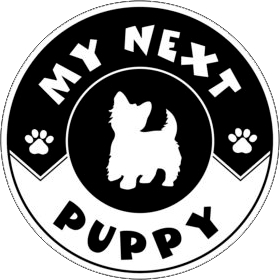-
Dogue de Bordeaux
A powerful and muscular French Mastiff breed, the Dogue de Bordeaux is a molluscoid (mastiff-type dog), “dogue” meaning Mastiff in French. A massive head and stocky body are trademarks of the breed. Americans became aware of the Dogue de Bordeaux when he appeared as drooling, messy “Hooch” in the 1989 Tom Hanks' film, Turner and Hooch. The breed's short, fine coat is fawn-colored, ranging from a dark red to a light fawn.
History
The Dogue de Bordeaux's history is a mystery different theories link him to the Bullmastiff, Bulldog, Tibetan Mastiff, and the ancient Dogues de Bordeuax of Aquitaine. In any case, the Dogue de Bordeaux has been used as a guardian, hunter, and fighter. They were trained to bait bulls, bears, and jaguars, hunt boars, herd cattle and protect the homes and businesses of their masters.
Temperament
The Dogue de Bordeaux possesses an instinct for guarding, which he does with vigilance and courage, but without aggressiveness. He is an excellent companion affectionate and attached to his family with a patient, calm temperament. Their short coat is easy to care for and they require moderate daily exercise. New owners should be prepared to deal with drool!
- Working Group; AKC recognized in 2008.
- Ranging in size from 23 to 27 inches tall at the shoulder and at least 99 pounds.
- Guardian; hunter.
Environment
- Apartment is ok.
- Low activity indoors.
Exercise
- Daily moderate exercise.
Grooming
- Easy care.
- Average shedding.
-
Miniature Pinscher
Known as the “King of the Toys,” the Miniature Pinscher is a compact, smooth-coated dog who is alert, spirited, and fearless, with a unique high-stepping, hackney-like gait. With his black and rust coloring, cropped ears, and docked tail, he resembles his cousin the Doberman Pinscher, but he is not a miniature Dobie. Coat colors include red, stag red (red with black hairs), black with rust markings, or chocolate with tan.
History
“Pinscher” means “Terrier” in German, and the Miniature Pinscher is a distinctly German breed that originated several centuries ago as an efficient barnyard ratter. The Miniature Pinscher is reported to include the Dachshund and Italian Greyhound among its ancestors, along with the shorthaired German Pinscher.
Temperament
The Miniature Pinscher can really spice up a person's life. This dog is small, but he doesn't know it! He's quick and active, with a lively curiosity. They are good family companions and look out for their family, bravely challenging intruders with their bold, insistent bark. The “Min Pin” will be happiest with a family that treats him like a standard-sized dog. He may be stubborn, but he's also smart. Their small size makes them a good choice for apartment life. Play and a daily walk will take care of most of their exercise needs. His short, easy-care coat requires occasional brushing and shampooing.
- Toy Group; AKC recognized in 1925.
- Ranging from 10 to 12 inches tall at the shoulder.
- Rat hunter.
Environment
- Apartment is fine.
- Very active indoors.
- thrive in warmer climates.
Exercise
- Daily moderate exercise.
Grooming
- Easy care.
- Average shedding.
-
Lhasa Apso
The Lhasa Apso is a small, hardy breed with a beautiful cloak of hair that parts down their back from head to tail. Their temperament is unique: joyful and mischievous, dignified, and aloof. An independent breed, the Lhasa's goal in life is not necessarily to please their master. Popular in the show ring, the breed also excels at activities that provide constant challenges, such as agility.
History
The Lhasa Apso originated hundreds of years ago in the isolated reaches of the Himalayan Mountains. It functioned primarily as a household sentinel, guarding homes of Tibetan nobility and Buddhist monasteries, particularly in or near the sacred city of Lhasa. In 1933, C. Suydam Cutting introduced the first Lhasas to the U.S. gifts from the 13th Dalai Lama.
Temperament
Bred as indoor watchdogs for hundreds of years, Lhasas can be suspicious of strangers, so early socialization is critical. They thrive living with adults or families with older children and enjoy regular walks. A long-coated breed, they also require frequent grooming. Many pet owners enjoy keeping their Lhasa in the shorter “puppy cut.”
- Non-Sporting Group; AKC recognized in 1935.
- Ranging in size from 10 to 11 inches tall at the shoulder and 12 to 18 pounds.
- Companion; watchdog.
Environment
- Apartment is fine.
- Active indoors.
Exercise
- Daily light exercise.
Grooming
- Regular brushing.
- Regular professional grooming.
- Very little shedding.
-
German Shepherd
The German Shepherd Dog is hailed as the world's leading police, guard, and military dog, however, this dependable breed is more than its 9-to-5 job. Consistently one of the United States' most popular breeds according to AKC Registration Statistics, the German Shepherd Dog is also a loving family companion, herder, and show competitor. The breed is approachable, direct, and fearless, with a strong, muscular body.
History
The German Shepherd Dog originated in 1899 at Karlsruhe, Germany due to the efforts of Captain Max von Stephanitz and others. Derived from the old breeds of herding and farm dogs, the first German Shepherd Dog exhibited in America was in 1907. The fame associated with Rin-Tin-Tin and Strongheart, two members of the breed whose movies played on variations of the boy and his dog theme, shot the popularity of the breed sky-high.
Temperament
Energetic and fun-loving, the breed is very fond of children once a relationship is established. He is a loyal family pet and a good guard dog, the ideal choice for many families. He requires regular exercise and grooming. The German Shepherd Dog is extremely intelligent. They are very easy to train with a firm hand and keep that training well.
- Herding Group; AKC recognized in 1908.
- Ranging in size from 22 to 26 inches tall at the shoulder.
- Herding, police work.
Environment
- Apartment is ok.
- Low activity indoors.
Exercise
- Daily moderate to extended exercise.
- May become restless without training.
Grooming
- Daily brushing.
- Bathe when necessary.
- Average shedding, heavy seasonal shedding.
-
Golden Retriever
The Golden Retriever, with its intelligence and eager to please attitude, is one of the most popular breeds in the United States according to AKC registration statistics. The working ability that has made the Golden Retriever such a useful hunting companion also make him an ideal guide, assistance, and search and rescue dog. The golden-colored coat is the hallmark of this versatile breed and can range from light to dark gold.
History
The Golden Retriever originated in the Scottish Highlands in the late 1800s and was used predominantly for hunting. He crossed his original “Yellow Retriever” with the Tweed Water Spaniel (now extinct) found on his estate. Later integrations of Irish Setter, Bloodhound, and more Tweed Water Spaniel produced the retriever we know today.
Temperament
This active and energetic Sporting breed can adapt to many different living situations but requires daily exercise. His water-repellant double-coat sheds seasonally and needs regular brushing. With his friendly temperament and striking golden color, this breed is both beautiful to look at and a joy to own. The Golden Retriever is great with children and other pets. They have an average lifespan of 10-12 years.
- Sporting Group; AKC recognized in 1925.
- Average size: from 55 to 75 pounds.
- Devoted companions, hunting dog.
Environment
- Apartment is ok.
- Moderate activity indoors.
Exercise
- Daily moderate exercise.
- Love interaction and games.
Grooming
- Easy care.
- Regular brushing.
- Average shedding.
-
Italian Greyhound
The Italian Greyhound is extremely slender and barely over a foot tall, but has all the grace and sweetness of his taller Greyhound relatives. There is debate as to whether they were originally bred for hunting small game or meant to be simply a companion. In all likelihood, both are true, as they are adaptable to city and country life. The Italian Greyhound's coat can be any color, except brindle and classic black and tan.
History
As with many ancient breeds, their depiction in art and architecture provides insight into their origin. Miniature greyhounds appear in ancient decorative arts of the Mediterranean countries dating back 2000 years. During the Renaissance, Italian noblemen adopted the breed as their own and it became known as the Italian Greyhound. The breed made its way to England in the seventeenth century, gaining steadily in popularity.
Temperament
Playful and intelligent, the Italian Greyhound is generally easy to train and prefers to spend most of his time with his owner. They like attention, affection, are peaceful, are a gentle friend to adults, and children. Italian Greyhounds are an active breed that loves to run and play and requires daily walks. Their small size makes them ideal for an apartment and his short, smooth as satin coat makes him one of the easiest breeds to groom.
- Toy Group; AKC recognized in 1886.
- Ranging from 13 to 15 inches tall at the shoulder.
- Companion, small game hunter.
Environment
- Apartment is fine.
- Fairly active indoors.
Exercise
- Daily light exercise is fine.
Grooming
- Very easy care.
- Bathe only when necessary.
- Little to no shedding.
-
Basset Hound
Instantly recognizable due to its big, heavy body, short legs, and long ears, the Basset Hound has proven itself to be a multi-purpose dog that excels in conformation, obedience, tracking, field trialing, and pack hunting. The breed is known for its strong hunting instinct and, if given the opportunity, will chase or follow a scent willingly. The Basset can be any hound color, which includes combinations of black, tan, white, red, and other colors.
History
The Basset Hound was originally developed in France as a trailer of small game that hunters could follow on foot. Bassets continued to achieve very notable popularity during the reign of Emperor Napoleon, and in 1880 Queen Alexandra kept Basset Hounds in the royal kennels. Marquis de Lafayette brought Basset Hounds, known for their impeccable sense of smell, to the United States as a gift to President George Washington to use in his hunting expeditions.
Temperament
The Basset's sweet, gentle disposition makes him a great companion and his short coat requires minimal grooming. The Basset is often great with children because they are not overly active. The Basset Hound also actively follows scents while outside so be prepared! They also get along very well with other dogs.
- Hound Group; AKC recognized in 1885.
- Height should not exceed 14 inches tall at the shoulder.
- Hunting dog; trailing dog.
Environment
- Apartment is ok.
- Low activity indoors.
- Average sized yard is fine.
Exercise
- Moderate daily exercise.
Grooming
- Easy care.
- Brush 1X/week.
- Keep ears clean.
'
-
Alaskan Malamute
The largest and oldest of the Arctic sled dogs, the Alaskan Malamute possesses great strength and endurance. He is not designed to race, but rather to carry large loads over long distances. Today, many Malamutes are family pets, but are highly athletic and still capable of enjoying sledding, weight pulling, backpacking, jogging, and swimming with their owners. The Malamute coat is thick and coarse, with a plumed tail carried over the back. The coat usually ranges in color from light gray to black or from sable to red. Face markings, including a cap on the head and a bar/mask on the face, are often distinguishing features.
History
An American breed, the Alaskan Malamute was named after the native Innuit tribe called Mahlemuts, who settled in Alaska. They have always been used as sled dogs for heavy freighting in the Arctic. The breed is the cousin to the other Arctic breeds: the Samoyed, the Siberian Husky, and the American Eskimo dog.
Temperament
Majestic and dignified, the Alaskan Malamute is an affectionate and friendly family dog. He is highly intelligent and learns quickly, but can also be strong-willed, so training should start early. As an athletic breed, daily exercise is a necessity. The Malamute's coat requires regular brushing and occasional bathing.
- Working Group; AKC recognized in 1935.
- Ideal size: Males 25 inches tall at the shoulder and 85 pounds; Females 23 inches tall at the shoulder and 75 pounds.
- Freighting.
Environment
- Apartments are not ideal.
- Thrives in large yard.
- Like to roam. High fence, watch for digging.
- Bring on the cold.
Exercise
- Moderate to extended.
- Love long walks.
- Be careful in hot weather.
Grooming
- Frequent brushing.
- Heavy shedding
- Infrequent bathing
-
Yorkshire Terrier
Yorkshire Terrier puppies, affectionately known as “Yorkies,” offer big personalities in a small package. Though members of the Toy Group, they are terriers by nature and are brave, determined, investigative, and energetic. They have long, luxurious blue and tan coats and because of that, they are non-shedding. This portable pooch is one of the most popular breeds according to the AKC Registration Statistics.
History
Named for the English city from which they originally hail, Yorkshire Terriers were used in the nineteenth century to catch rats and other small rodents in clothing mills. Surprisingly enough, in its beginnings, the Yorkie belonged to the working class, especially the weavers; in fact, facetious comments were often made about how the dogs' fine, silky coats were the ultimate product of the looms. Eventually, the breed left the workforce and became a companion animal to families of European high society.
Temperament
Yorkies are easily adaptable to all surroundings and because of that, they travel well and make suitable pets for many homes. Due to their small size, they require limited exercise but need daily interaction with their people. Their long coat requires regular brushing. The Yorkie does better around older children that won't pull or yank on them. They tend to bond with one person, therefore extra socialization is needed in a family environment.
- Yorkshire Terrier Breed Standard.
- Toy Group.
General Appearance
That of a long-haired toy terrier whose blue and tan coat is parted on the face and from the base of the skull to the end of the tail and hangs evenly and quite straight down each side of the body. The body is neat, compact, and well proportioned. The dog's high head carriage and confident manner should give the appearance of vigor and self-importance. Grooming is recommended every six weeks or so. The most popular haircut for the Yorkie is called a 'puppy cut'.
Environment
- Apartment is fine because of small size
- Very active indoors.
Exercise
- Daily light exercise.
Grooming
- Regular brushing and combing because of non-shedding hair coat
- Periodic professional grooming recommended.
- Little to no shedding.
-
Pug
The Pug is well described by the phrase “multum in parvo” which means “a lot of dog in a small space.” They are recognized for their even-tempers, playful personalities, and their outgoing, loving dispositions. This square and cobby breed come in fawn, silver fawn, apricot fawn, or black, with a well-defined “mask” on his muzzle. A popular companion dog, the pug also excels in the show ring.
History
The Pug is one of the oldest breeds of dogs and has flourished since before 400 BC. Most researchers agree that the breed comes from Asia, due to its similarities to the Pekingese. China is the earliest known source for Pugs, where they were pets of the Buddhist monasteries in Tibet. The breed next appeared in Japan and Europe, becoming popular when Prince William II became the King of England. He owned Pugs and they became the fashionable breed for generations.
Temperament
The Pug's reason for living is to be near their people and to please them, and their sturdiness makes them a family favorite. They are comfortable in small apartments because they need minimal exercise, but the breed can adapt easily to all situations. The Pug sheds, but its short coat requires little grooming.
- Toy Group; AKC recognized in 1885.
- Weighting between 14 to 18 pounds.
- Companion dog.
Environment
- Apartment is fine.
- Low activity indoors.
- Thrive in moderate climates.
Exercise
- Daily light exercise.
Grooming
- Easy care.
- Heavy seasonal shedding.

 Available Puppies
Available Puppies What People Are Saying
What People Are Saying